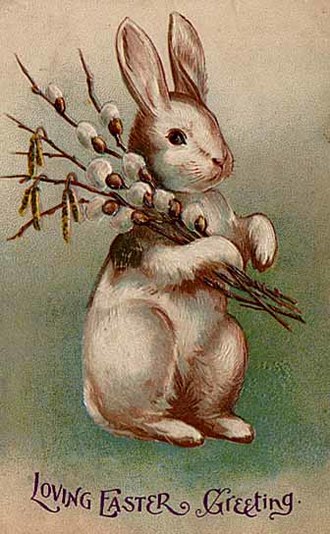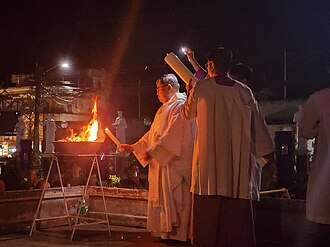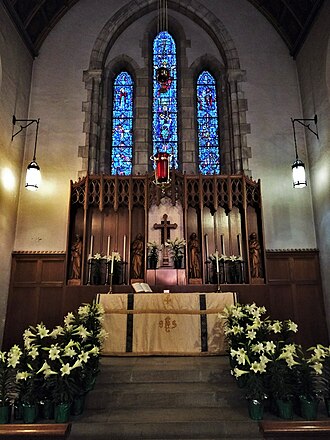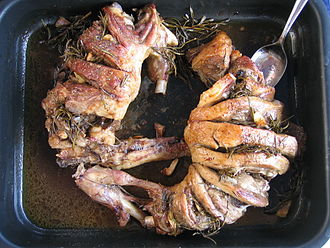Discover Your Roots
SIGN UPDiscover Your Roots
SIGN UPEaster is a female name of English origin, which means "Goddess of Fertility, Spring." The name is associated with the Christian festival and cultural holiday commemorating the resurrection of Jesus from the dead, celebrated on Easter Sunday. It is the culmination of the Passion of Jesus and is preceded by the 40-day period of fasting, prayer, and penance known as Lent. The name Easter is linked to the Jewish Passover and the symbolism of new life and rebirth. Easter traditions include sunrise services, Paschal greetings, flowering the cross, egg hunts, and the decoration of Easter eggs. The name is derived from the Anglo-Saxon goddess name Ēostre and is also related to the Jewish Passover. It is a moveable feast, not falling on a fixed date, and its date is computed based on a lunisolar calendar, generating controversies around its calculation.

The Easter Bunny, also known as the Easter Rabbit or Easter Hare, is a beloved folkloric figure and symbol of Easter. Originating among German Lutherans, the Easter Bunny was initially associated with evaluating children's behavior at the start of Eastertide, similar to Santa Claus's "naughty or nice" list. The Easter Bunny is depicted as a rabbit, often dressed, and is known for bringing colored eggs, candy, and sometimes toys to children's homes, much like Santa Claus during Christmas. The tradition of the Easter Bunny was first mentioned in 1682, referring to a German folk belief of an Easter Hare laying eggs hidden in gardens and bushes for children to find.The symbolism of rabbits and hares has ancient roots, with the hare being associated with the Virgin Mary and the Holy Trinity. In Christianity, Easter eggs symbolize the tomb of Jesus and his resurrection. The tradition of decorating eggs and giving them to children has evolved over time and has cultural variations in different parts of the world, including the practice of dyeing eggs red in memory of the blood of Christ, as observed in the Eastern Orthodox Church and Oriental Orthodox Church.The association of the Easter Bunny with the Anglo-Saxon goddess Ēostre has been a subject of debate and speculation, with various interpretations and legends surrounding the origins of the Easter Bunny. Despite differing beliefs, the Easter Bunny remains an iconic and cherished figure in Easter celebrations, bringing joy to children and families around the world.

Easter eggs, also known as Paschal eggs, are intricately decorated eggs used to celebrate the Christian holiday of Easter, which commemorates the resurrection of Jesus. The tradition of Easter eggs has ancient origins and is deeply rooted in various cultures. Eggs, symbolizing fertility and rebirth, gained Christian symbolism as a representation of the empty tomb of Jesus from which he was resurrected. The practice of decorating eggshells dates back thousands of years, with engraved ostrich eggs found in Africa dating back to 60,000 years ago. In early Christian communities, the custom of staining eggs with red in memory of the blood of Christ became widespread. The Christian Church officially adopted the custom, considering the eggs a symbol of Jesus' resurrection. The spread of Easter eggs throughout Christendom is attributed to various cultural, religious, and political influences. The association between eggs and Easter likely emerged in Western Europe during the Middle Ages due to the prohibition of eating eggs during Lent. This led to the tradition of blessing and consuming eggs as part of the Easter celebrations. In modern times, the custom of using chocolate eggs, hand-carved wooden eggs, or plastic eggs filled with confectionery has become prevalent in some regions. The tradition of Easter eggs continues to be an integral part of the Easter festivities, symbolizing new life, rebirth, and the joy of the resurrection.

The Easter Vigil, also known as the Paschal Vigil, is a significant liturgy in traditional Christian churches, marking the first official celebration of the Resurrection of Jesus. It is a key event in the liturgical year for various Christian denominations, including the Roman Catholic Church, Lutheran Churches, Anglican Communion, Moravian Church, Reformed tradition, Methodist tradition, Eastern Orthodox churches, Oriental Orthodox churches, and other traditions of Eastern Christianity.The Easter Vigil typically involves a series of ceremonies and liturgical elements, such as the blessing of an Easter fire, the lighting of the Paschal candle, the Liturgy of the Word, the rite of Baptism, the Asperges, and the Liturgy of the Eucharist. This vigil often includes the chanting of ancient psalms, readings from the Old Testament, and the proclamation of the Resurrection of Christ.The Easter Vigil holds particular significance for the reception of new members into the Church, with baptisms and the reception of adult catechumens into full communion with the Church being common practices during this liturgy. The vigil is also characterized by the joyful use of the exclamatory "Alleluia," marking the beginning of the Easter season.With its rich historical and liturgical significance, the Easter Vigil is a deeply meaningful and festive observance that serves as a pivotal moment in the celebration of Easter for Christians around the world.

Easter traditions, also known as Paschal traditions, are customs and practices celebrated globally to honor Easter, the central feast in Christianity, commemorating the resurrection of Jesus. The Easter season is marked by celebration and feasting, in contrast to the preceding season of Lent, which is a time of penitence and fasting. Traditions include sunrise services, Paschal greetings, flowering the cross, wearing Easter bonnets, egg decoration, and communal breaking of Easter eggs. Easter lilies traditionally decorate churches during Eastertide, and various Easter foods are prepared, colored, and decorated. Many traditional Easter games and customs have developed, such as egg rolling, egg hunt, egg tapping, and egg dance. The holiday is also commercially significant, with widespread sales of greeting cards and confectionery like chocolate Easter eggs. In Ethiopia and Eritrea, Easter, known as Fasika, is a significant festival celebrated among Christians, marking the Death and Resurrection of Jesus. It is a much more important festival than Christmas in these cultures.

Easter, a Christian holiday celebrating the resurrection of Jesus, is marked by various customs and food traditions. One popular tradition is the preparation, coloring, and decorating of Easter eggs, which symbolize the empty tomb of Jesus. The Paschal Lamb, eaten in many countries, holds religious significance as it represents the sacrifice of Jesus Christ. In addition to eggs and lamb, hot cross buns are traditionally consumed on Good Friday in the United Kingdom, Australia, New Zealand, and other countries, symbolizing the crucifixion of Jesus. Grasshopper pie, a no-bake mint-flavored mousse pie, is associated with Easter celebrations in the United States due to its light green color, representing spring. In Ireland, Easter was traditionally marked by a large feast including lamb, veal, chicken, and a meal of corned beef, cabbage, and potatoes. These customs and foodways vary across different countries, reflecting the diverse cultural and culinary traditions associated with the Easter holiday.
All images displayed on this page are sourced from Wikipedia or Wikimedia Commons.We use these images under their respective Creative Commons or public domain licenses. Wherever applicable, author attributions and license information are provided. If you believe an image is used incorrectly or outside its license terms, please contact us so that we can review and correct the issue.